Face extraction from Pamplona
The planetarium of Pamplona was built 7 months ago to cover the cultural opportunity that this city did not have.
Throughout the state there are buildings that only have planetarium or science museums. In Iruñea, for his part, he wanted to unite everything.
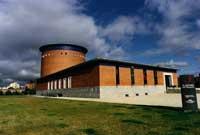
The planetarium should not be limited only to astronomy or science. It is immersed in a broader cultural concept, although astronomy has an important content. The history of women in the world of work, the history of comics, the photographic exhibitions of the architecture of Pamplona are an example of this.
Therefore, whoever wants to see the planetarium film has other cultural options and exhibitions, or whoever attends a conference has the opportunity to see the planetarium film. This film is mainly the production of planetarium, although on other occasions it is works carried out in collaboration with the planetariums of Castellón or Madrid.
But what is the planetarium?
The word Planetarium means that it refers to the planets. Therefore, its objective is to express the Solar System. Nowadays, however, the word planetarium is related to the instrument that projects in a dome (and often with projector construction), the planet, the stars and other figures of the sky.
Since time immemorial, man has wanted to understand and represent heaven. The first known planetarium, Cicero describes us in his own book. Archimedes a. C. Made around 250. In addition to the movement of the Sun, Moon and planets, it showed the phases of the Moon and the eclipses of Sun and Moon.
With the passage of time, the models and celestial spheres took the form of the great planets of our time. In 1650 Adam Olearius and Andreas Busch built the “Gottorp Globe”: a 3,1 metre dome in which the stars were drawn. People came under the dome to see the stars, moving the dome with a mill wheel. The planets were shown by small glass spheres.
From this planetarium Professor Roger Long of Cambridge built a 5.4-metre dome. The dome was full of holes and the outside penetrated the light contrasting with the inner darkness.
At the beginning of this century, Oskar von Miller, founder of the Deutsches Museum in Munich, encouraged Carl Zeiss to work on this subject. A team of Carl Zeiss, led by Walter Bauersfeld, with the advances of von Miller in this topic, took a big step: instead of using domes loaded with holes, placed under this dome a projector. Therefore, when moving the projector it was not necessary to move the entire dome. This made mechanical systems much easier.
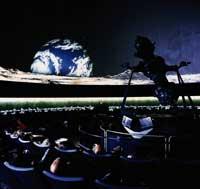
With this idea was born in 1923 “The Wonder of Jena”, the first planetarium of the new era. At first, Carl stood in the Zeiss building in Jenan and was later seen at the Deutches Museum.
The current advances have greatly accentuated the possibilities of expanding astronomy, where all audiovisual methods can be applied: high-definition slides, three-dimensional images, image movement, video projection and special effects, laser projections, special sound systems, etc. Everything guided by computer science offers an incredible show.
Pamplona is such a planetarium. It has a dome of twenty meters and projector of the house Carl Zeiss, as those installed in Sttutgar, Washington and New York.
Main projectors, about 9 thousand stars, planets (except Uranus, Neptune and Pluto), Moon, Sun, comets, shooting stars, Milky Way, nebulae, etc. can project them. It also has auxiliary projectors, slide projectors and video. As for the dome, so that it is light and can give the right shape, it is made of aluminum. Then it is covered underneath with a special plastic to reflect the light to the right extent.
After all, the Planetarium is a film show that, through projectors, photos and videos, shows topics related to astronomy.
Planetarium and classes
We talked about these issues with Bidaño Ollo. Bera holds a degree in Biology from the University of Navarra. He was a professor of Natural Sciences in Vitoria-Gasteiz before coming to the Planetarium. He is the only one who knows Basque in the planetarium staff. He must translate into Basque all the texts that appear in Basque, since they have no money to pay the translator.
Among the visitors of the Planetarium are mainly concerned with the students. Because in addition to being more than half the number of visitors, astronomy has to be shown very elementally so that they understand it well.
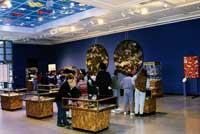
Classes planning to approach the planetarium are sent a triptych. This triptych, in addition to the application, provides information on the four projections for students. “Normally there are students between eight and sixteen years old and adapting to age a show or another is chosen. These four projections are offered in both Basque and Spanish, according to the demand of the school. I give sessions in Basque, even if they are eight or sixteen years old,” says Bidaño. The next step is to agree to choose the day.
So that students who come to know what they have to do, they have prepared some texts. It offers different exercises and readings to work in the Natural Sciences class. In this way students learn better the core of the show.
The sessions are every afternoon, from Tuesday to Friday. Saturday morning and afternoon and holidays only in the morning. Classes are held in the morning, from Tuesday to Friday.
When we asked him how the kids behave, he replied: “Normally very good. The concert is divided into three parts. In the first the video of the film is inserted (in 30 minutes or). As they watch the film, they remain unmoved in the seats as fascinated. In another 20 minutes they are shown the stars that appear in the sky that night and are told the mythology of some constellation. In this last part everyone starts to wonder. Many times you are surprised by asking and then you have to be very careful when explaining why to understand it.
The interview with Xabier Armentia, director of the Planetarium was:
Elh.- What steps have you taken before being director of Planetarium?
J. A.- Well, first in 1985, I graduated in Physics from the Complutense University of Madrid, specializing in Astrophysics.
There he was studying the activity of double stars of all kinds. These stars have spots similar to our Sun, so they present important magnetic and convective phenomena.
My job was to look with large telescopes and analyze the peculiarities of their spectrum.
In addition, the functions involved in the exercise of the university, teach...
Studying in the faculty, in the year 90 came the place of director of the Planetarium of Pamplona. I sent the curriculum and they took me.
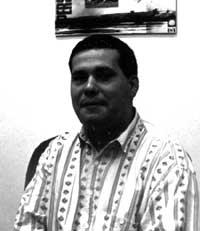
Elh.- How does the idea of putting a planetarium arise?
J.A.- The idea of the Planetarium came from the Government of Navarra. They wanted to give a cultural opportunity to Pamplona and decided to make a planetarium. Subsequently, Caja Navarra also participated in the financing.
This decision is quite surprising, since there are no major trends in astronomy in Pamplona.
Elh.- At what point did Xabier Armentia enter the project?
J.A.- By the time I entered I had decided how the construction would be, that is, that a large planetarium would be built. On the other hand, the main projector was in charge, as it takes a year and a half until you request it and get it. A normal optomechanical projector was selected.
The Science House was determined to be, in addition to a small planetarium, a planetarium with other cultural possibilities.
But the works had not yet begun and for me it was like starting from scratch, and I found it a very attractive project.
On the other hand, the project has been quite criticized. People wondered what the planetarium is, what it is for, if without spending so much money it was no better to do something more. Bear in mind that this construction has been made with public money and that in recent times there have been significant cuts.
Therefore, getting a cultural opportunity for everyone was an interesting challenge and I think we are on the right track.
Elh.- How have people responded in this first half of the year?
J. A.- The response has been very good, in these first six months there have been 50,000 people, half of them schoolchildren. Therefore, we will exceed all forecasts if we continue so until the end of the year.
At first it is a novelty. So it's normal for so many people to come. To keep the planetarium alive we have to get to repeat the visit. For this, on the one hand, we hold exhibitions, conferences and courses, and on the other, we will change the projection of the planetarium every six months.
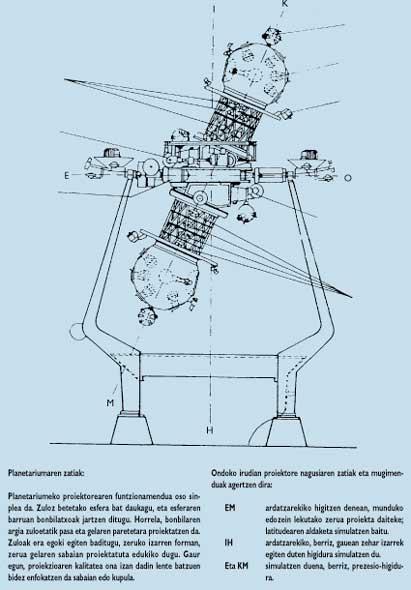
Buletina
Bidali zure helbide elektronikoa eta jaso asteroko buletina zure sarrera-ontzian











